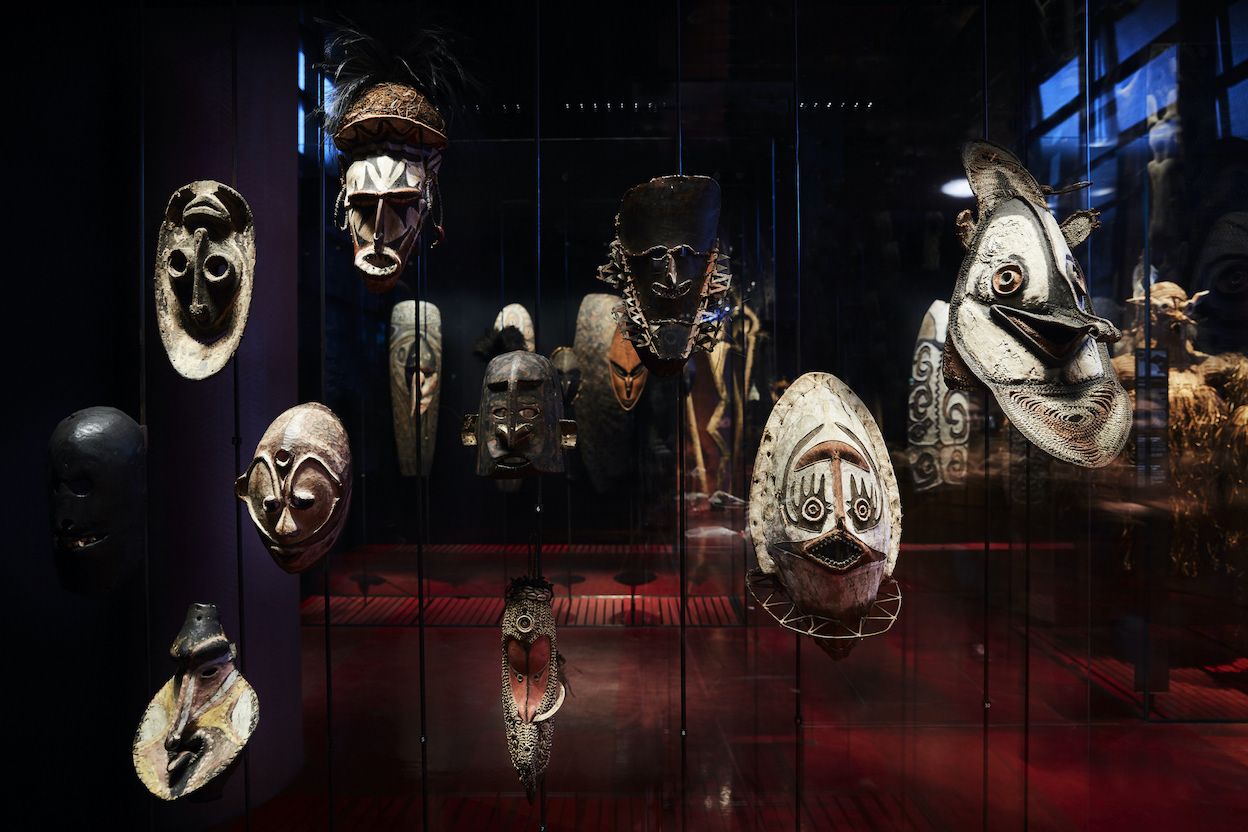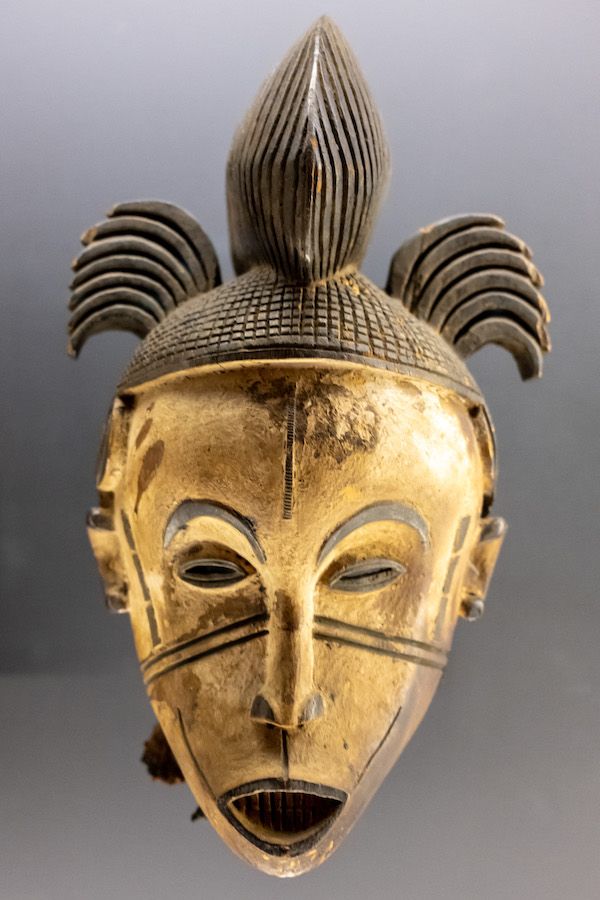
I greatly enjoyed “Face and Mask. A Double History” by Hans Belting. I read it in German, but for once the English translation better captures the book’s central thesis than the original German title “Faces. Eine Geschichte des Gesichts”. Indeed, I was a bit puzzled why Belting chose to use the term “face” in the German original and I didn’t find his reference to the etymology of the word “face” in English and French that convincing. Of course, the distinction is lost in the English translation anyway.
In "Face and Mask. A Double History," Hans Belting provides a detailed exploration of the historical and cultural significance of faces and masks. Through a nuanced analysis of the relationship between these two concepts, Belting presents a novel conceptual framework for re-thinking the history of Western art.
I was delighted to read that Belting refers to an exhibition at the Fondation Cartier, at its former location in Jouy-en-Josas, "À visage découvert", of which I also have fond memories.
Simple questions sometimes have complicated answers. For what, exactly, is a face? As Belting writes, a face “does not truly become a face until it interacts with other faces, seeing or being seen by them” (p.1). It enables communication, through facial expressions and through the look on one’s face, and yet it is difficult to describe "the face". As Belting argues, “the face is not merely an image but also produces images” (p. 21). It does so on an ongoing basis. As such the face also creates meaning. The volatile nature of the face, in turn, has inspired centuries of image-making. The history of art can therefore be read as a cultural history of the face.
As I noted above the English title “Face and Mask. A Double History” more accurately describes the book’s main theme than the German original, for as Belting argues face and mask should not be viewed in opposition to one another, whereby the face stands for authenticity and the mask for concealment and deceit. The face itself can function as a mask to reveal or conceal the self. Face and mask are two sides of the same coin and together constitute the organizing principle of a ‘history of the face’.
As Belting observes, masks are typically worn by dancers and come to life during a performance. Conversely and paradoxically, “the living face becomes stiff and rigid as a mask when it is portrayed; the very process of reproduction immediately yields a mask that can no longer change expression” (p. 7).
The book is divided into three parts: "Face and Mask. Changing Views", "Portrait and Mask. The Face as Representation" and "Media and Masks. The Production of Faces". Together they examine the history of the face from prehistorical times to the present day, from the use of death masks in funerary rites to the rise of identity cards and facial recognition software. Belting also discusses the ways scientists have sought to gain knowledge about a person through physiognomy and phrenology, with an important role for artists, and the rise and demise of the use of masks in theatre.
Drawing on a wide range of examples, Belting traces the evolution of portraiture and its impact on the representation of the human face. He also considers how, from the Renaissance onwards, the face has been portrayed to convey social status, power and beauty. It is worth noting that the book was first published in 2013, so before the emergence of Instagram and TikTok filters, which have taken self-representation to a whole new level. In the book's final paragraph Belting considers what he calls cyberfaces, masks without a face. Technology advances so fast that it is no longer necessary to spend hours manipulating an image in Photoshop. Deep Convolutional Generative Adversarial Networks (DCGANS) now make it possible to create an endless array of realistic faces with a click of a button.
Throughout the book Belting returns to his central thesis that the face remains elusive, that it defies attempts at visual representation, even with the development of new media such as photography and film, which promise ever-greater degrees of likeness.
In the final section Belting discusses the face in contemporary art, film and popular culture. This section I found the least interesting, because it reads as a summary of arguments that I’m already familiar with. Belting considers Andy Warhol’s portraits of Mao in relation to Don DeLillo’s Mao II and the work of artists as diverse as Christian Boltanski, Nam June Paik, Chuck Close and Arnulf Rainer.
Overall, Belting's analysis of faces and masks is both comprehensive and insightful. His writing is nuanced and engaging, and he provides a rich array of examples to support his arguments. "Face and Mask. A Double History" is a must-read if you’re interested in art and aesthetics.
